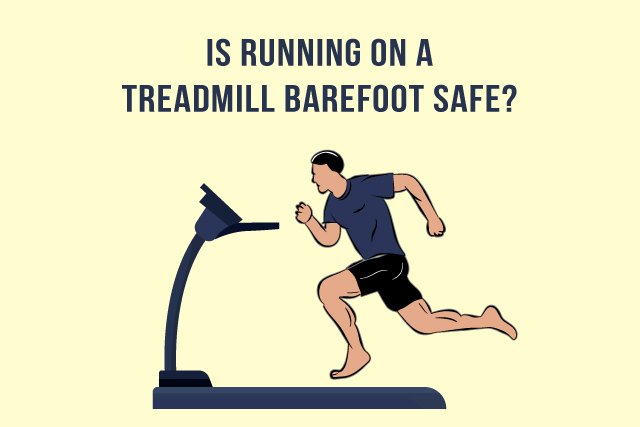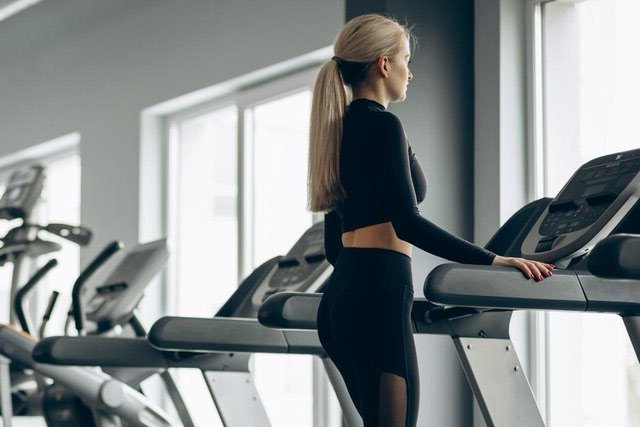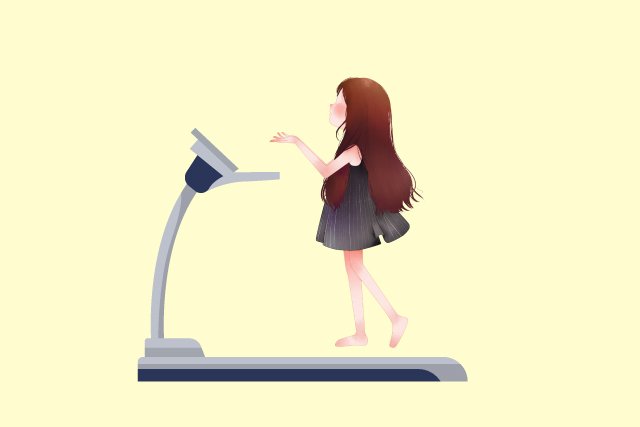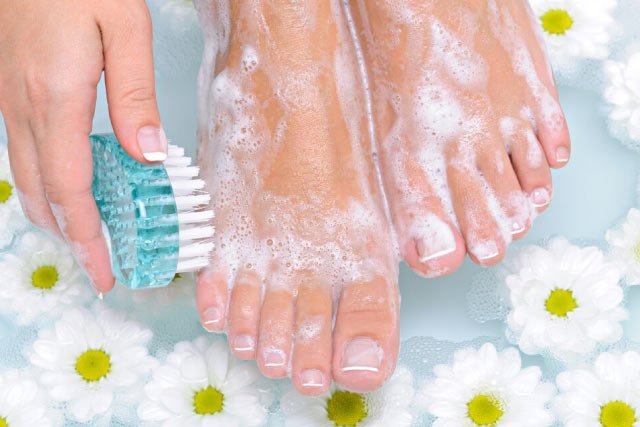
In recent years, a captivating fitness trend has emerged, inviting enthusiasts to ditch their shoes and experience the thrill of running barefoot on a treadmill. This unconventional approach to indoor running has gained popularity for its unique benefits and the sense of connection it provides to the natural way our bodies move.
1. Starting With the Benefits

One of the primary advantages of barefoot treadmill running lies in its improved biomechanics. Unlike traditional running shoes, which often alter the natural movement of our feet, running barefoot allows for a more natural and free range of motion.
Enhanced proprioception, or the body’s ability to sense its position in space, is another notable benefit. It encourages better balance and a heightened awareness of body positioning, contributing to overall stability during workouts to stay healthy. Additionally, the absence of cushioned soles promotes a midfoot strike, reducing the impact on joints and lowering the risk of injuries.
2. Choosing the Right Treadmill for Barefoot Running

The right equipment is crucial before delving into the barefoot treadmill running world. Consider features that facilitate a smooth, safe barefoot experience when choosing a treadmill. Opt for a flat and non-slippery surface to ensure stability during workouts.
Considerations for Choosing the Right Treadmill:
- Look for a treadmill with a flat, textured surface to prevent slipping.
- Ensure that the treadmill belt provides enough grip without causing discomfort.
- Test the treadmill’s responsiveness to speed adjustments for better control during barefoot sessions.
3. Proper Form and Technique

Running barefoot on a treadmill requires a slight adjustment in running form. Focus on maintaining a midfoot strike to absorb shock efficiently. Ensure a soft landing with each step, allowing the foot to roll naturally from heel to toe. This adjustment promotes a more comfortable and injury-resistant running experience.
Tips for Proper Form:
- Keep your posture upright, avoiding leaning forward or backward.
- Allow your arms to swing naturally, contributing to the rhythm of your stride.
- Focus on landing softly, using your foot’s natural arch to absorb impact.
4. Transitioning to Barefoot Running

For those new to barefoot running, a gradual transition is critical. Begin with short sessions and slowly increase the duration as your foot muscles strengthen. Incorporate specific exercises to target and condition the muscles in your feet, preparing them for the unique demands of barefoot running.
Transitioning Tips:
- Start with 5-10 minutes of barefoot running during each session.
- Gradually increase the duration by 1-2 minutes per week.
- Include foot-strengthening exercises like toe taps and calf raises in your routine.
Common Misconceptions and Concerns
One common concern is the fear of injury or discomfort associated with barefoot running. Contrary to misconceptions, barefoot treadmill running can be a safe and enjoyable workout when approached with care. Understanding the proper techniques and progression is essential to address these concerns effectively.
Dispelling Myths:
- Myth: Barefoot running always leads to injuries.
- Reality: Proper technique and gradual progression minimize the risk of injury.
- Myth: Treadmill running is not suitable for barefoot enthusiasts.
- Reality: Choosing the right treadmill and maintaining proper form ensures a safe experience.
5. Foot Health and Hygiene

Maintaining foot health is paramount when engaging in barefoot treadmill running. Keep the treadmill surface clean, and ensure your feet are free from cuts or abrasions before starting a session. While barefoot running offers numerous benefits, it’s important to recognize when footwear may be necessary to protect your feet.
Foot Health Tips:
- Before each session, check your feet for cuts, blisters, or abnormalities.
- Clean the treadmill surface regularly to avoid bacterial growth.
- Consider wearing minimalistic shoes if your feet require additional protection.
6. Experiencing Different Terrains Virtually

One of the exciting aspects of barefoot treadmill running is the ability to simulate various terrains. Adjusting the incline and speed settings can replicate outdoor conditions, providing a versatile workout experience. This variety not only keeps workouts engaging but also challenges different muscle groups.
Simulating Terrains:
- Increase incline for a hill-like experience, targeting different muscle groups.
- Adjust speed to simulate sprinting or slow-paced running, adding variety to your routine.
- Experiment with interval training by alternating between different terrains within a single session.
7. Scientific Perspective on Barefoot Running

The scientific community has shown increasing interest in the biomechanics of barefoot running. Research supports the idea that running without shoes can lead to better foot strength, improved balance, and a reduced risk of specific injuries. Biomechanics and sports science experts emphasize allowing the foot to move naturally for optimal health and wellness.
Scientific Findings:
- Reference recent studies supporting the benefits of barefoot running.
- Quote biomechanics and sports science experts on the advantages of natural foot movement.
8. Psychological Benefits

Beyond the physical advantages, there are notable psychological benefits to running barefoot on a treadmill. Many enthusiasts report a heightened sense of mindfulness during barefoot sessions, emphasizing the connection between mind and body. The simplicity of the activity and the direct contact with the treadmill surface contribute to a unique and meditative workout experience.
Mindfulness and Stress Reduction:
- Explore the link between barefoot running and reduced stress levels.
- Share personal anecdotes or quotes from enthusiasts highlighting the meditative aspect.
9. Incorporating Barefoot Running into a Fitness Routine

For those considering adding barefoot treadmill running to their fitness routine, finding a balance with traditional running is key. Integrating other exercises, such as strength training, dynamic mobility, powerlifting, cardio, and flexibility workouts like yoga, ensures a well-rounded approach to overall health and fitness.
Balancing Fitness Routine:
- Provide sample weekly workout routines incorporating barefoot treadmill running.
- Emphasize the importance of cross-training for overall fitness.
10. Tips for Beginners

If you’re new to barefoot running, start with short sessions and gradually increase the duration as your feet adapt. Seek guidance from fitness professionals who can provide personalized advice based on your fitness level and goals. Patience and consistency are crucial to a successful transition to barefoot treadmill running.
Beginner Tips:
- Emphasize the importance of a gradual transition to minimize the risk of injuries.
- Suggest consulting with a fitness professional for personalized guidance.
- Encourage consistency and patience during the adaptation phase.
11. Common Mistakes to Avoid

In the excitement of embracing barefoot treadmill running, one must be aware of common mistakes that can hinder progress. Avoiding these pitfalls ensures a smooth and enjoyable transition to a barefoot running routine.
Common Mistakes:
- Overexertion: Going too hard, too soon, can lead to injuries. Emphasize the importance of gradual progression.
- Neglecting Warm-up and Cool-down: Skipping these crucial steps increases the risk of muscle strain. Stress the importance of proper preparation and recovery.
Conclusion
Running barefoot on a treadmill offers a unique and refreshing workout experience. The physical and psychological benefits make it a compelling option for fitness enthusiasts seeking a natural and mindful approach to indoor running. By understanding the proper techniques, gradually transitioning, and incorporating them into a well-rounded fitness routine, individuals can unlock the full potential of barefoot treadmill running.
FAQs
Is barefoot treadmill running suitable for everyone?
It can suit many, but individuals with pre-existing foot conditions should consult a healthcare professional before starting.
Do I need a unique treadmill for barefoot running?
While not mandatory, choosing a treadmill with a flat and non-slippery surface enhances the barefoot running experience.
Can barefoot treadmill running help with injury recovery?
Some individuals find that the natural movement of barefoot running can aid in injury recovery, but consulting with a healthcare professional is essential.
How often should I incorporate barefoot running into my routine?
The frequency of barefoot treadmill running depends on individual fitness goals and preferences, but starting with one to two sessions per week is recommended for beginners.
Are there specific warm-up exercises for barefoot treadmill running?
Incorporating foot-strengthening exercises and dynamic stretches can prepare your muscles for a barefoot running session.








